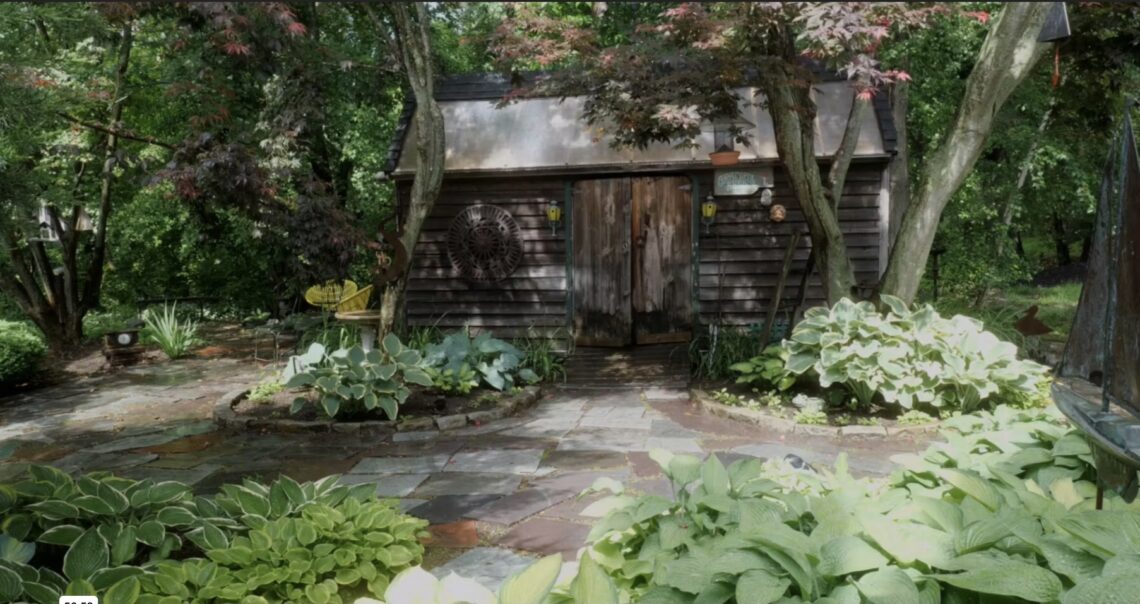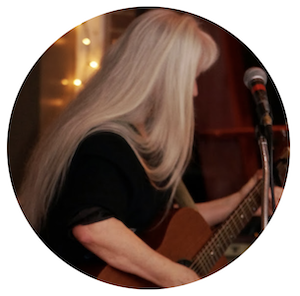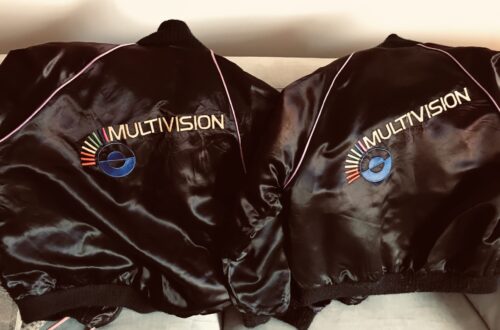
Shooting Dugie
Last week I did a shoot by myself. I like to work like that because there is no one with a second opinion. Besides, the shed was too small. The subject was Dugie Russell, an 84 year old man who has had many life experiences, is on track to have a few more and had a “near death” experience that changed his life.
You can see the video here:
https://marksteeleproductions.com/dugie-russell
Meeting interesting people and spending time with them is rewarding in itself, being able to create a lasting document of their lives is an added bonus. It makes the experience worthwhile.
But I’m here to talk about the process, the lights, cameras and microphones. The bits and pieces that all have to work or the whole thing would end up just Mark and Dugie talking for a few hours.
I started setting up at noon. We had chosen this time because it seemed comfortable and gave us both time to have an easy morning and then start work. The shed we shot in used to be a potting shed and had half of its roof made of clear plastic that let a lot of light in. The morning, it turns out, was overcast and was a perfect time to shoot. As the day moved on it got less and less cloudy. I thought of calling Dugie and starting earlier but decided to let things go on as planned. As it turned out the sky was still fairly cloudy and the lighting looked good. The shed is pretty small and cozy, the only thing I changed was to take down a mirror that would have reflected me and the cameras. I used two LED panels one for a KEY light on the left side of his face and one for a FILL on the right side of his face they were about 5’ away from him. The KEY was at full strength and the fill was at about 20%, even so the lighting is fairly even. I tried using no FILL and it actually looked good but I thought it was too dramatic for this type of interview. In fact the room around him is interesting enough. Both cameras are Panasonic S-5’s, the wide shot is 24mm at 3.5 and the closer shot is 50mm at 1.6. Both lenses had 1/4 Black Promist filters on them. I shot at 4K resolution and 24 frames per second.
Videographers have always attempted to make video look like film. In the old days we’d do all kinds of things that today seem like futile attempts that actually made the video look worse. We’d take a piece of pantyhose and stretch it over the end of the lens that attached to the camera to give a misty look, some brave souls would smear vaseline on the lens to fog it up. In post production we’d try softening and darkening the image to no avail. I had about 5 mins of video that someone had shot of film grain that was projected on a white screen. That was post production GOLD. I’d superimpose it over the interview and think it looked good. I was only kidding myself. Even Hollywood directors did stuff like that. Robert Altman shot snow falling at night that was lit and super’ed it in over footage in the movie McCabe and Mrs. Miller. I remember seeing that movie in 1971 and thinking how weird the snow looked but had no idea I’d be doing a similar thing 15 years later.
Today it’s easier. I shoot at a resolution of 3840 x 2160 pixels (4K) which was unheard of in 1986. I shoot in a film aspect ration of 16×9 instead of the old 4×3 of television before flatscreens of today. I shoot at 24 fps instead of the 30 fps of old school video. Film is shot at 24 fps. That rate is actually pretty slow creating some motion blur in frames where there is motion. It is actually more pleasing to the viewer. I can shoot at 60 fps and sometimes do but the image is much different to view than 24. Even the difference between 30 and 24 is noticeable. So it’s 24 FPS, 16×9 aspect and 1/4 Black Promist that gives me the look I want. Also, if I forgot to mention, never overexpose.
I show up and unpack the gear. First I put up the lights where I think I want them. Then I put the cameras together and put them on the tripods. Next I set up the audio with the microphone on a mic stand overhead. I’ve gotten to the point where I don’t like to see a lavalier mic in the shot. Sometimes I have to do it but try to avoid it whenever possible. With the subject in place I adjust the lights by eye and by viewing through the lens. There is some back and forth but in a situation like I had with Dugie it is pretty quick. Then I make an adjustment to the exposure of the cameras and do a “white balance”. Then I make a final adjustment to the exposure. The cameras have a tool called “Zebras”. I set the Zebras to be visible at 70 IRE. When the exposure on the subjects face is at 70 IRE diagonal lines will appear in that area. I then go 1 stop down to darken the image a little so the zebras go away. If a window or light show zebras it’s OK as long as it isn’t overexposed. Then I make a final adjustment to the framing of the shot in each camera. I generally want the subject to be a little out of the center of the frame in the close shot and similar in the wide shot. The eyeline has to be right between the two shots of it doesn’t look jarring when in editing you cut between the two. Then I make a final adjustment to the focus and I’m ready.
Oh wait, I forgot the audio. With Dugie I had one overhead shotgun mic and I had a direct feed from the pickup on his guitar. I ask him to speak with a level that he will be speaking in when we start. Most people raise their voices when the interview starts. If you point this out to them it helps. I try to get the level correct in the field and don’t adjust it during the interview because if you do that you’ll be chasing the level in the editing process. After a couple of strums on the guitar I think I’m ready.
I always pose the topics or questions in a way that encourage the subject to answer in full thoughts. People will answer in a way like, “Yes, that’s when I …..” and in the edit you never know what the “yes” is referring to. So I say something like “Tell me about when…” or if I feel like it I ask them to tell me their answer in a story. I don’t like to interrupt the subject and will let a short pause happen at the end of their talk, many times they will start back up to fill the silence with a very interesting topic that they hadn’t expected to say. It is all about making the person being interviewed comfortable and not rushed. Most people are a little nervous in front of the camera. In addition, I sit almost behind the camera with the close shot and ask them to look at me. Rarely I’ll ask them to look directly into the lens and then I sit directly behind the camera. I explain to them that I won’t talk or respond while they are talking because it will be picked up on the mic. But I’ll nod or give them a thumbs up to show that I am paying attention. This seems to work well.
As I was breaking down the gear after shooting Dugie’s interview he said he had forgotten to sing one song he wanted to do. There was a side of me that wanted to say that we had enough but I resisted it and set one camera up again and plugged the mic and the guitar back in. I was lazy and didn’t use my headphones because the levels had been OK for about 4 hours, they’d be OK now. We’ll, when I got home I realized that the guitar cable was plugged in on one end but not the other so. I had to go back and shoot that song the next day again. It reinforced what I know too well that there are no short cuts. When you shoot video you have to dot all the i’s and cross all the t’s all the time. Otherwise you will get screwed. I was going back the next day to shoot B Roll anyway.
B Roll is extra shots that aren’t part of the interview but back up what the subject is talking about. In this case it was quite a bit of stuff. I had to shoot his shed, his garden, his bird estates, his collection of artifacts from a sunken 1700’s warship and photos he had referred to in his interview. I also had footage I had shot 3 years ago while trying out my slo-mo capability on my camera of the rocks and waves around Salem and Marblehead. I wanted to get steady cam footage of walking through his garden but I know how hard that can be. It is very hard to walk smoothly enough to not see steps in the video. I’ve done this enough to know I need to shoot slo-mo to lessen the bouncing. In this case I’m very happy with how it turned out. The hand held camera in slo-mo gives a floating feeling to the video that I think is great. It’s much better than a static shot on a tripod.
I try to keep the videos to between 12 and 20 minutes. Dugie’s video is 57.. Yikes… But I feel as though it’s OK. He is interesting enough to keep the viewer engaged for what is considered a LONG video.
Thanks for reading and give the video a view and let me know what you think.
Best Wishes,
Mark





One Comment
Alan Hezekiah
Once again, the technical jargon is not in my wheelhouse: but I have a better understanding and app of your work. I love the song about the “yard sale”. I can picture Don White singing that song.😂
Thanks 👍🏾